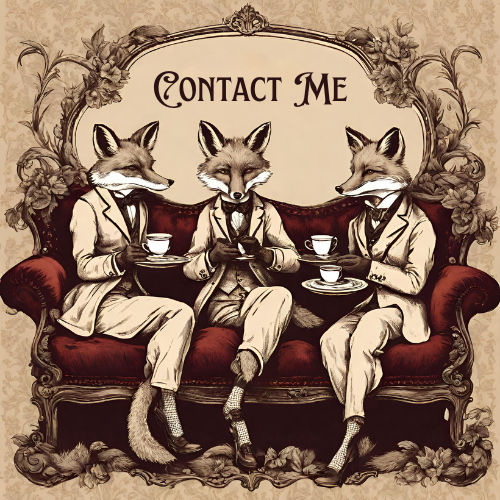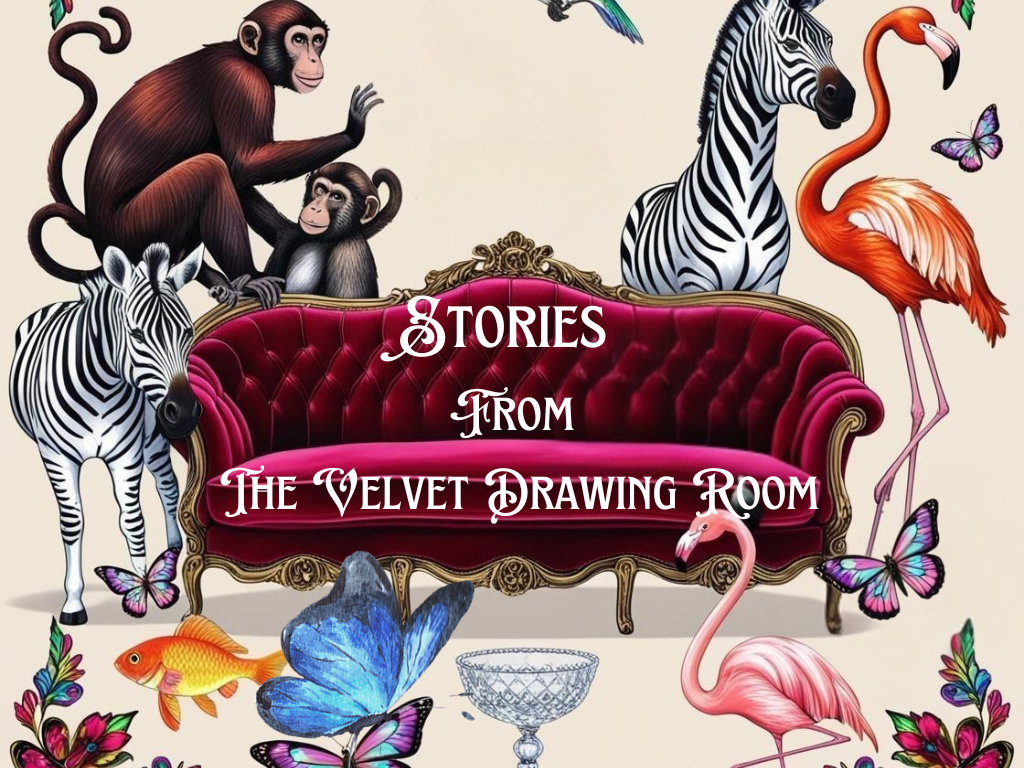Beautiful things
can live forever

WHAT IS TAXIDERMY?
Taxidermy is a way of eternalising beautiful creatures. It’s a way of hanging on to the beauty of nature. It’s the privilege of getting up close and seeing every detail of otherwise elusive or ephemeral beings and Victorian taxidermy made this possible. It’s the art of making dead animals appear to be alive and, in a way, it’s about beating death at its own game.
Technically, it involves the removal of the skins of birds, mammals (and some insects). All grease and fat and soft internal tissue is removed from the internal structure of the animal’s skin so that there are no internal organs left. The skin is then placed over a mould or a form or shaped with the help of wires, and manipulated to recreate its original shape and appearance. The word “taxidermy” is derived from Ancient Greek – taxis means “order or arrangement” and derm means “skin”.
IT STARTED WITH CABINETS OF CURIOSITIES
the precursors of natural history museums and of the Victorian taxidermy movement
Victorian Taxidermy was chic decor but also served science
In 19th century Britain the art of Victorian taxidermy was being quickly developed. There were many taxidermists in mid to late Victorian Britain – every established town had one, and usually it had several.
Not all taxidermists were good, though! There’s plenty of rubbish out there, but it’s simple to understand why, because anyone can have a go at anything that can be sold; it doesn’t mean they are any good at it.
Taxidermy forms no exception to the rule of evolution from a stage of crudeness. These days there is plenty of well-deserved fun poked at the “crap” taxidermy, old and new, and there are even Instagram, Twitter and websites dedicated to it that provide endless entertainment! But there is still plenty of modern and antique victorian taxidermy work that is the opposite of crap.
Victorians of all classes, including Royalty, used taxidermy to decorate their homes, but Victorian taxidermy was also used for scientific purposes to record living and extinct species. It was used for educational research and many Museums relied upon the taxidermist for a supply of interesting display items. It was normal to put preserved animals into glass cases in Britain, not least so they could be displayed in the home, and today it’s the best of these glass cased examples that form the core of the interest for modern day collectors.
The good British taxidermists and makers of Victorian taxidermy of the 19th and early 20th centuries produced enduring works of mammals and birds that are of great interest today to collectors, enthusiasts, historians and interior designers alike. These include the creations of Edward Gerrard, George Ashmead, Henry and Rowland Ward, Peter Spicer, Thomas Gunn, and James Gardner, to mention just a few.
Their Victorian taxidermy creations were works of art and demanded creative and technical expertise. This was not just related to the preservation of the animal or the bird, but also to case making as well as scene painting and recreating the natural environments of the specimens; things like making fake rocks, preserving grasses and placing ornate flora and fauna in the scene.
The Victorians' relationship with death
It is worth noting that culturally, people during the Victorian period had a different relationship with death than we do today. Items that we may now find strange, such as jewelry made with the hair of a deceased loved one or post-mortem photography, were not meant to be scary. Instead, they were ways to preserve a memory of a loved one in a time when the death happened in the home and was a more common part of daily life. Taxidermy found a similar niche – it was more about preservation and celebration than about morbidity.
Preserving Pets
Perhaps when we think of Victorian Taxidermy we think about how the Victorians also started to have their pets stuffed and preserved.
There was quite a fashion for it.
Today we still see Victorian pets for sale in the taxidermy market, usually little dogs in glass cases, or kittens asleep on velvet cushions.
This picture gallery below shows preserved dogs at the Natural History Museum at Tring
These dogs – all pedigree – were set up as a collection by Rowland Ward’s firm and were donated to the British Museum in the early 20th Century (Morris).
I suppose it’s slightly more of an acceptable thing to do than keeping Aunt Matilda in an urn on the mantlepiece?
photos by Dorne Lovegrove
photo credit: Design & Nature, Paris
Meanwhile, in Europe
In Europe generally speaking the Victorian taxidermy glass case examples are found far less often because the local, natural wildlife that was being controlled – like deer and boar – didn’t lend themselves to being put into cases.
However, there were important pioneers of taxidermy art in France and Germany, for example. These demand the attention of another blog post, but the German taxidermy artist, Hermann Plouquet (1816-1878), produced some anthropomorphic scenes of a style that had never been seen before . These were on display at The Great Exhibition of 1851 at the Crystal Palace. There were six glass cases with scenes that told the tale of Reynard the Fox which caused quite a stir and caught the attention of Queen Victoria herself.
Émile Deyrolle (1838–1917) was a French naturalist a natural history dealer in Paris who established the legendary French firm of Deyrolle in 1831. Now on the Rue du Bac it’s one of the most famous representatives of taxidermy in Europe. The building is exquisitely French with decorated ceilings and a beautiful old winding staircase and it’s in the very fashionable 7th arrondissement. Exotic taxidermy, entomology, and natural history specimens displayed in antique wooden cases and glass bell jars demand the imagination to envisage its beginnings.
photo: Dorne Lovegrove
Perceptions
These days the respected, professional Taxidermists who produce high quality work only mount species that have died in zoos or in captivity, and the stuffing or preservation of some of these species has only increased awareness of the problems.
Throughout its history, British Victorian taxidermy has contributed to our understanding of the natural world, preserved specimens for scientific research, and provided a unique form of artistic expression.
The truth is that Victorian taxidermists did not go out and simply kill things; hunters did, because they wanted to preserve the memory of their kill, just like Fishermen wanted to preserve the memory of their catch.
In Victorian times, Gamekeepers were employed to kill “vermin” and some of these creatures (like fox, badger, otter for example) inevitably ended up at the taxidermist, including red squirrels which were officially actively being hunted and culled in Scotland up to 1946. It must be remembered that in the 19th century these creatures existed in much larger numbers than they do today. These days their habitats have been eroded by man and savage capitalism and climate change is having a devastating effect. Numbers are not decreasing because some have been taxidermied.
Representing animals in their natural environment is the best way to engage people with the need for conservation, so for people who will never see the places that are subject to change, taxidermy gives them a sense of the beauty of the creatures, but its going to take a so far absent international movement to make sure there’s a proper plan for conservation, especially in coastal wetlands and tracts of natural habitats.
TAXIDERMY LAW
There are still those who will be law breakers, and there always were, but there are now active attempts that set out to control the hunting and sale of endangered species like otter and wildcats in Britain and Europe. There are agencies including RSPCA and the RSPB who help to enforce the laws including under The Wildlife & Countryside Act 1981.
Similarly, there are laws that control the sale of antique taxidermy species, too, as well as laws banning the sale of Ivory. The Control of International Trade of Endangered Species (CITES) does much to prevent illegal activities and even some antique specimens like owls, eagles need a license to sell even though they could be decades old, and the Animal & Plant Health Agency in Bristol must be applied to for the import, export and sale of taxidermied specimens – even on some antique species – otherwise it’s a criminal offence.

photo: Dorne Lovegrove
THE LAST WORD
In the 18th and 19th centuries when travel became possible, explorers and hunters had a new playing field. They went to far-off countries and killed things and brought or sent them back to Britain, sometimes as a result of “commissions” from London traders or as trophies and objects for scientific discovery.
During the 18th century many of these animals ended up in Menageries, then came the Circuses and Zoos.
There were no reference books. People had never seen these objects before and the level of general illiteracy was high, so Victorian taxidermy helped people to look at these creatures and give them a way of learning about the world.
In those days the Victorian taxidermy industry took advantage of the abundance of creatures. Climate change hadn’t yet impacted our attitudes or destroyed animal habitats, neither had the global economic market started – nor the collective moral conscience.
Let’s not pretend that killing animals was ok. We know better now. We can’t reverse what has been done and we can’t bring these animals back to real life.
What we can do is appreciate what we have managed to conserve so far and ensure that future destruction is avoided as far as possible.
Discover more from thevelvetdrawingroom.co.uk
Subscribe to get the latest posts sent to your email.
























